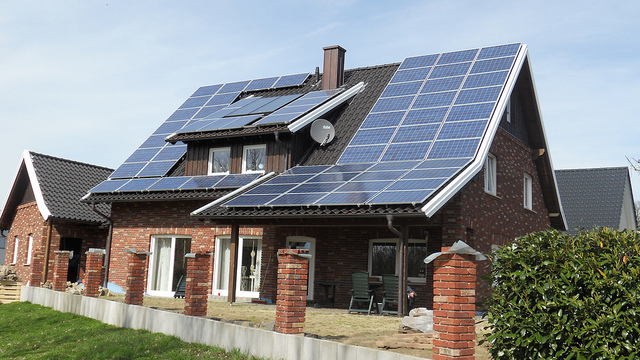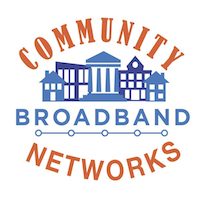The big news this week was about the fall of the Comcast/Time Warner Cable merger. We like to think it was because of our incredibly brilliant, insightful (also: “witty”, “pithy”, “charming”…) letter to Comcast.
Once Comcast’s Deal Shifted to a Focus on Broadband, Its Ambitions Were Sunk By JONATHAN MAHLER, New York Times
At the end of the day, the government’s commitment to maintaining a free and open Internet did not square with the prospect of a single company controlling as much as 40 percent of the public’s access to it… it didn’t really matter if Comcast and Time Warner’s cable markets overlapped. The real issue was broadband.
Blocking Comcast Is a Start. But if We Want Better Broadband, We Need Much More by Peter Kafka, Re/Code
‘Fast, fair and open:’ FCC Chairman lays out his big picture for broadband, WRAL TechWire
In case you missed it, here is a transcript of Chairman Wheeler’s remarks to Broadband Communities in Austin.
“Our idea of rock stars would be the leaders of Chattanooga, Tennessee and Wilson, North Carolina.”
Community Broadband News by State
California
Digital debate: SF supervisors mull connecting the masses with citywide broadband network by Joshua Sabatini, San Francisco Examiner
“Fiber broadband lines are exactly the same as highway and roads,” Brooks said. “It’s a thing all governments need to put in as a government service so that all people and all businesses can go nuts on that system, enjoy the system and make loads of money.”
Brooks said The City would ultimately recoup the costs with businesses “chomping at the bit” to use a fast city-owned broadband service, which would charge them less than other private services like Comcast.
“We are way behind the curve and the way to get ahead of the curve is to just build out a public system,” he said.
Maryland
Boone talks Internet expansion by Dorian Mitchell, My Eastern Shore Maryland
“When you see kids in their dad’s pickup truck in the library parking lot on Sundays, trying to connect to the Internet, that’s what we call a Third-World issue,” he said. “That shouldn’t be happening in this country.”
Boone said the project involves a theoretical “ring” of dark fiber-optic cable, starting in the Fairlee area and possibly extending as far west as U.S. Route 301, that would encircle the existing structures in Kent County. This ring would allow a provider to “light” the cable and beam their services all over the county.
“We’re looking to keep the price at zero,” he said. “We’re not looking to create revenue, our goal is to give it (service) away as much as possible without being in the red.”
Massachusetts
Hilltown officials puzzle over broadband costs by Diane Broncaccio, The Recorder
Michigan
VIDEO: Southern Michigan’s Rural Broadband Revolution
In the 1930s, electric cooperatives were formed to bring power and light to the rural space. Today, Midwest Energy Cooperative is again responding to the needs of those who are unserved and underserved as a result of geography by leveraging the utility fiber communications system to offer a true high-speed internet solution to its members.
Minnesota
Economic Development and Fiber, Pots and Pans
New Mexico
SF [Santa Fe] launches $1M broadband infrastructure project by T.S. Last, Albquerque Journal
“Here’s the government doing what it’s supposed to do: helping out its citizenry,” he said, comparing the project to streets and highways. “It’s one of these things that this is a lot more important than it may appear to be. Improving people’s access to the Internet will help increase what they are able to do and its effects will be felt for a long time.”
New York
Expansion of high speed Internet can help region stay competitive by Elizabeth Cooper, Utica Observer-Dispatch
Broadband for everyone by 2019! The new state budget included a $500 million allocation for the expansion of high speed Internet, and it’s slated to be complete by the end of 2018.
Oregon
Oregon Changes State Tax Law to Lure Google Fiber by Karl Bode, DSL Reports
Other Broadband News
Smart Cities: It’s More Than Broadband by John M. Eger, Huffington Post
Nothing could be more timely or important as this signal to cities that our future, the future of America in the Internet age, depends on renewing, often reinventing, our cities for the global, knowledge economy.
In every study about economic development, the importance of broadband Internet services is mentioned prominently. Given the realignment of power in the world — from nations to cities to individuals — what the city does or does not do can determine their community’s success and survival, or its demise; and as such, will determine the nation’s success or failure.
Look to the States on Broadband by The Editorial Board, New York Times
Bloomberg’s ‘What Works Cities’ Initiative Targets 100 Mid-Sized Metros by Colin Wood, GovTech
The $42 million, three-year program will provide expertise and time to cities that want data-driven solutions for their biggest challenges.
Broadband and Real Estate by Doug Dawson, Pots and Pans
The numbers behind the broadband ‘homework gap’ by John B Horrigan, Pew Research Institute
… Read More








